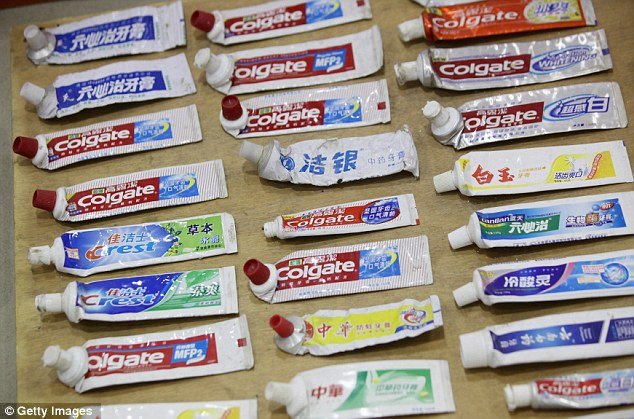7 Toothpaste Color Secrets Revealed

The humble tube of toothpaste. It’s a staple in our daily lives, yet have you ever stopped to think about the colorful world of toothpaste? From the familiar red and white stripes of a classic brand to the more exotic colors of natural and organic options, toothpaste colors can reveal a surprising amount about the product and its intended use. Let’s delve into the world of toothpaste colors and uncover some secrets that might just change the way you think about your oral care routine.
The Psychology of Color in Toothpaste
Colors can evoke emotions and influence our perceptions. In the context of toothpaste, colors are often used to convey a sense of freshness, purity, and effectiveness. For instance, the color white is commonly associated with cleanliness and purity, which is why many toothpastes feature white as a primary color. The use of green, on the other hand, can suggest natural ingredients and an environmental focus, appealing to those who prefer organic products.
Decoding the Colors: A Guide
- Red and White Stripes: This iconic design is perhaps the most recognizable in the world of toothpaste. It’s synonymous with quality and trust, evoking feelings of safety and reliability. Brands that use this design often aim to convey a sense of tradition and effectiveness.
- Blue: Often associated with professionalism and trustworthiness, blue toothpaste packaging can suggest a product that’s both soothing and effective. It’s also commonly used for toothpastes designed for sensitive teeth, as blue can convey a sense of calmness.
- Green: As mentioned, green usually signifies natural or organic ingredients. It appeals to consumers looking for a more environmentally friendly option or those who prefer products with fewer chemicals.
- Yellow and Orange: These vibrant colors are typically used for children’s toothpastes. They’re playful, attention-grabbing, and can make the experience of brushing teeth more appealing to kids. These colors are also used to signify fruit flavors, making the product more appealing to a younger audience.
The Science Behind Toothpaste Colors
Beyond the psychological impact, some toothpastes include coloring agents for functional reasons. For example, certain dyes can help in distributing the paste evenly, ensuring that the active ingredients are spread uniformly across the teeth. However, it’s worth noting that the use of artificial coloring agents in toothpaste has become a topic of controversy, with some consumers opting for products that use natural coloring agents or no artificial dyes at all.
Natural and Organic Options
The rise of natural and organic toothpastes has introduced a range of new colors to the market. These products often avoid artificial dyes, instead using natural ingredients like essential oils, herbs, and minerals to achieve their hues. For consumers who are conscious about what they put in their bodies, these options can be very appealing. However, it’s crucial to ensure that these products are not only visually appealing but also effective in maintaining good oral health.
The Future of Toothpaste Colors
As consumer preferences continue to shift towards more natural and sustainable products, the future of toothpaste colors is likely to follow suit. We can expect to see more toothpastes using natural coloring agents and packaging that reflects an eco-friendly ethos. Moreover, advancements in technology could lead to toothpastes that change color as they are used, indicating how much product is left or even signaling when the toothpaste is no longer effective.
Conclusion
The world of toothpaste colors is more complex and nuanced than one might initially think. From influencing our perceptions of a product to signaling its intended use or ingredients, colors play a significant role in the world of oral care. As consumers become more discerning about the products they use, understanding the secrets behind toothpaste colors can help in making informed choices that align with personal preferences and values.
Frequently Asked Questions
What do the colors on toothpaste mean?
+The colors on toothpaste can signify the type of ingredients used, the product's intended use, or the brand's identity. For example, green often indicates natural ingredients, while blue can suggest a product for sensitive teeth.
Are artificial coloring agents in toothpaste safe?
+While regulatory bodies approve the use of certain artificial coloring agents in toothpaste, some consumers prefer to avoid them due to concerns over potential health impacts. Natural coloring agents are becoming increasingly popular as an alternative.
Can toothpaste colors affect their efficacy?
+The color of the toothpaste itself does not directly affect its efficacy. However, the ingredients used to achieve certain colors might. For instance, some natural coloring agents might have additional health benefits, while certain artificial dyes could potentially be harmful in large quantities.
As we continue to navigate the colorful world of toothpaste, being informed about what these colors mean can empower us to make better choices for our health and the environment. Whether you’re loyal to a traditional brand or exploring the realm of natural and organic options, understanding the secrets behind toothpaste colors adds a new layer of depth to our daily brushing routine.



